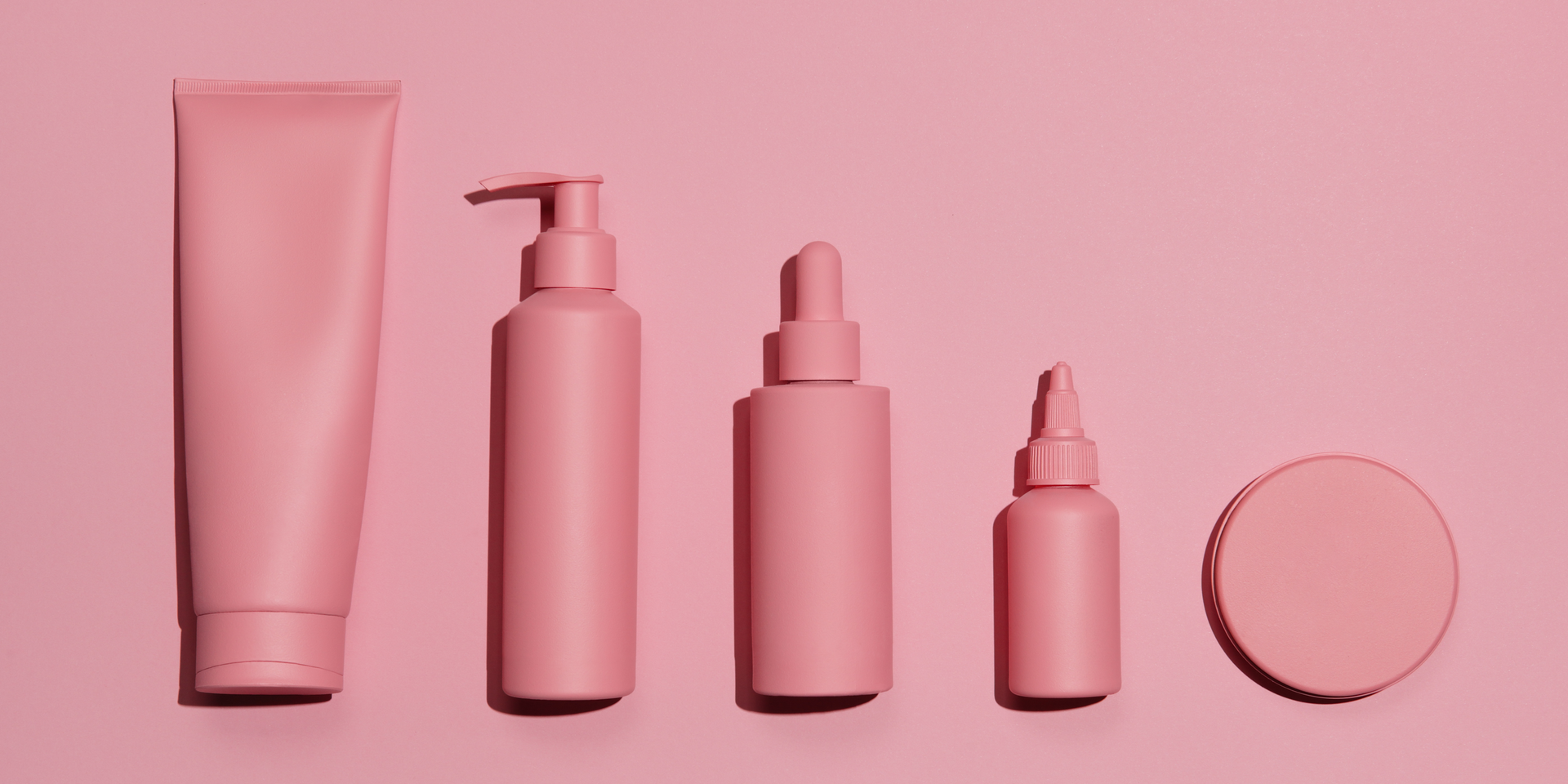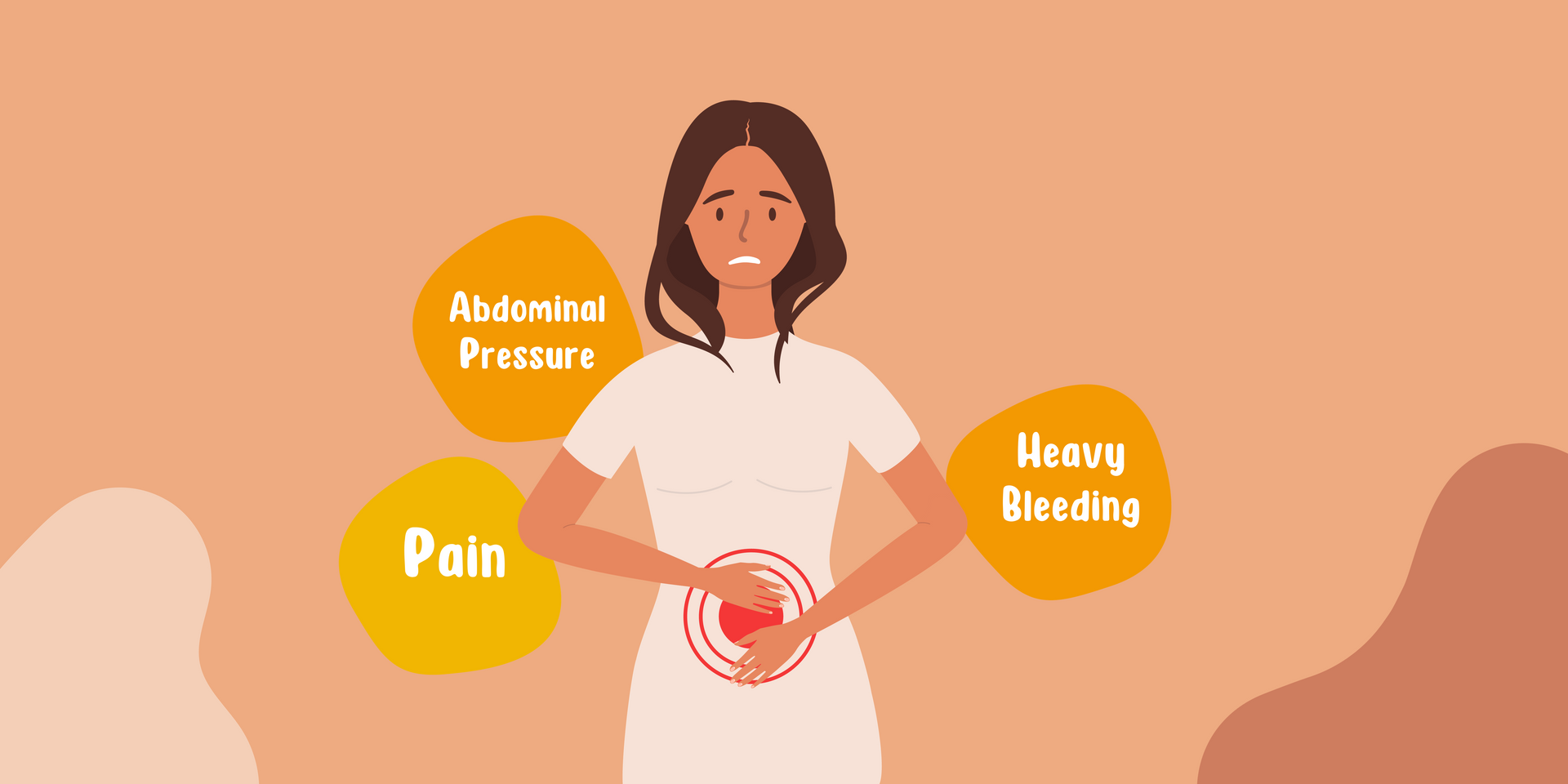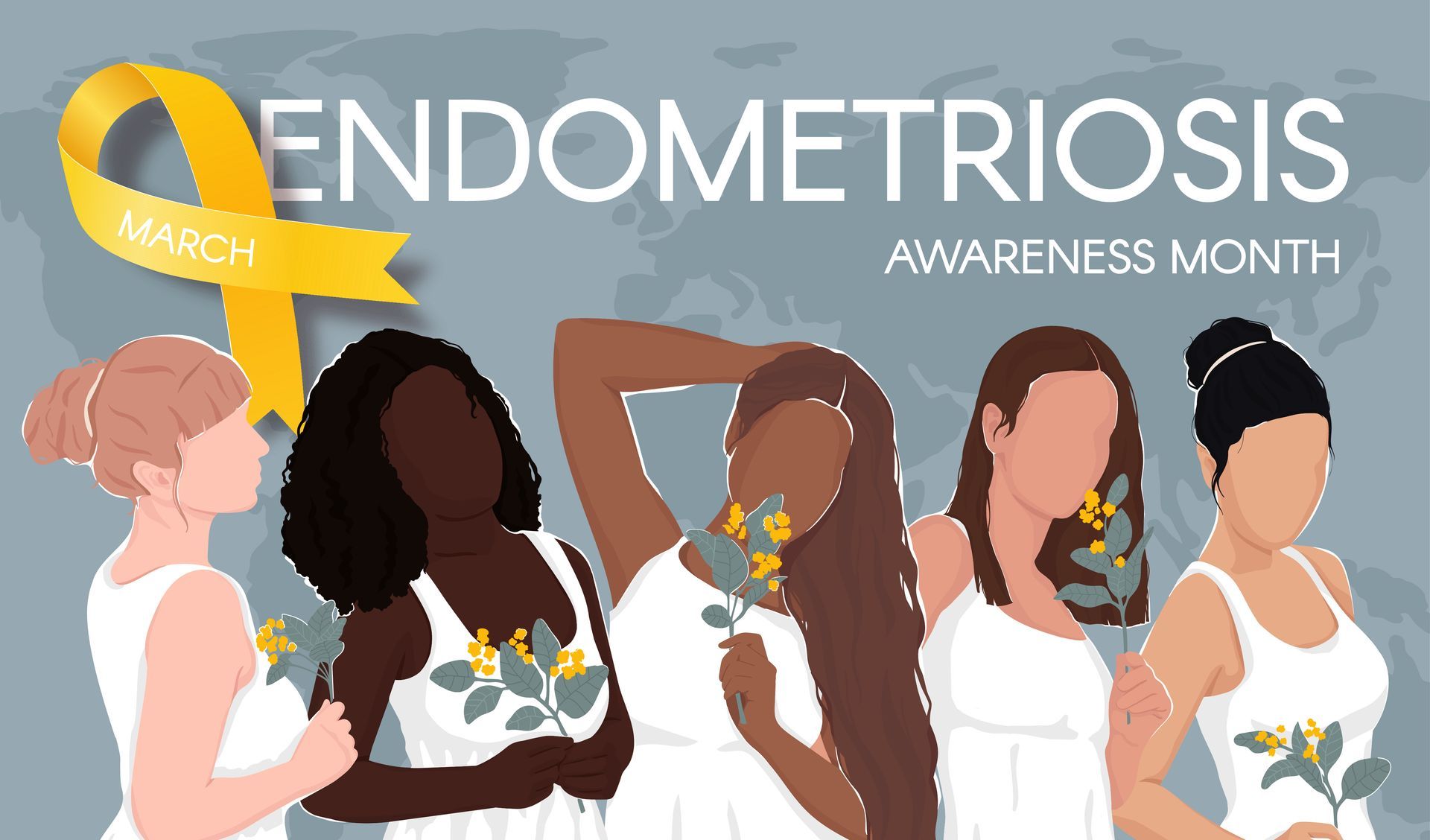Stress is Real: An Insight into the Impact on Women's Health and Solutions
April is stress awareness month, so, let's talk about how chronic stress can harm our health. The impact of prolonged stress on a woman's health and well-being can be devastating. Evidence suggests that stress raises the risk of cardiovascular disease (CVD), depression, and anxiety in women. Their social lives, professional productivity, and overall quality of life may all suffer as a result. The development of physical and mental health problems owing to prolonged stress exposure can exert a negative impact on a woman's quality of life. Hormonal shifts, pregnancy, and caregiving responsibilities are all stressors that tend to affect women. When we're under pressure, our bodies secrete hormones such as cortisol and adrenaline that prepare us for the “fight or flight” reaction. These chemicals, however, can wreak havoc on our bodies and lead to a host of health issues when stress is ongoing.
So how can stress affect a woman's health?
Being under constant stress exacerbates toxin accumulation that compromises the liver's ability to remove toxins from the blood. Toxin accumulation in the body due to improper liver functioning can result in numerous undesirable side effects. Some possible outcomes include an increased likelihood of developing cancer, CVD, and diabetes.
Cardiovascular Diseases
CVDs are the leading cause of mortality in women worldwide. Furthermore, chronic stress has been identified as a risk factor in women, causing conditions such as high blood pressure, coronary artery disease, and stroke. One of the ways in which stress can harm a woman's heart and blood vessels is through high blood pressure, which damages arteries and raises the risk of heart disease and inflammation. Stress also leads women to adopt unhealthy coping methods such as smoking and overeating. Especially for women who are pregnant or undergoing menopause, chronic stress has been demonstrated to affect cardiovascular health and raise the risk of CVDs.
Weakened Immune System
When our immune system is weakened, we are more likely to fall ill. Stress has been shown to have a profound effect on the immune system, reducing its effectiveness and leaving women more vulnerable to disease and infection. Stress compromises the immune system, thereby decreasing the production of white blood cells. This lowering of the body's immunological response leaves us more vulnerable to disease and infection, as well as prolonging our recovery time. Additionally, an increase in systemic inflammation is one way in which persistent stress can contribute to the onset of degenerative conditions such as arthritis.[i]
Reproductive Health
Stress affects women’s reproductive health, compromising not only their menstrual cycle but also their ability to conceive and carry a healthy child to term. Stress can potentially exert an impact on ovulation in some women. This is due in part to the effect of stress on the hypothalamus, the part of the brain that regulates reproductive hormones, thereby disrupting the delicate balance of hormones involved in menstruation and potentially leading to ovulatory dysfunction. Chronic stress, in particular, can change the levels of hormones such as cortisol, which can affect the levels of reproductive hormones (estrogen and progesterone), leading to irregular or absent ovulation.[ii] The effect of stress on ovulation has a direct impact on fertility, thus decreasing a woman's chances of getting pregnant. Experiencing high levels of stress during pregnancy is associated with adverse outcomes such as premature birth, low birth weight, and developmental impairments in infants.[iii] Reduced libido is a negative sexual outcome that has been linked to stress in women. [iv]
Digestive Health
Stress can significantly affect digestive health, contributing to a host of stomach ailments. Constipation, diarrhea, and other gastrointestinal disorders have been linked to chronic stress. This is because emotional strain can alter the composition of beneficial gut bacteria, causing gastrointestinal distress. Prolonged stress can increase stomach acid production, which can, in turn, lead to acid reflux and heartburn. Stress can also cause Irritable Bowel Syndrome, the symptoms of which include abdominal pain, bloating, and a shift in bowel patterns. Persistent stress can increase intestinal inflammation, thereby exacerbating the symptoms of inflammatory bowel diseases, including Crohn's disease and ulcerative colitis. Vitamin and mineral shortages can also be attributed to the negative impact of chronic stress on nutrient absorption in the digestive tract. [v] Moreover, stress-induced alterations in food intake, be it bingeing or restricting, can aggravate existing digestive problems.[vi]
Disruption of Sleep Patterns
Women are particularly vulnerable to the negative effects of stress on sleep, which leads to or exacerbates the onset of sleep disorders, further weakening the immune system. When stress levels are high, the body releases cortisol and other hormones that can disrupt the natural sleep-wake cycle and make it more difficult to fall and stay asleep. Moreover, women may experience specific types of stress that affect their sleep, such as premenstrual syndrome, pregnancy-related stress, or menopause-related stress. These types of stress can be accompanied by physical symptoms such as hot flashes, night sweats, or physical discomfort, which can further disrupt sleep. Chronic stress can also lead to long-term sleep disturbances, including insomnia, which can have negative effects on physical and mental health. Sleep is critical for a range of bodily functions, including immune function, cognitive function, a decrease in chronic pain, and emotional regulation; hence, it's important to address any sleep disturbances that may be related to stress.
Skin Disorders
Stress can aggravate various skin disorders, including acne, eczema, and psoriasis. Persistent anxiety has been linked to an increase in the production of sebum, a form of oil that can clog pores and promote acne. Both eczema and psoriasis are inflammatory skin disorders, and chronic stress can worsen their symptoms.[vii] Stress may contribute to the onset of many skin conditions, such as itching, rashes, and hives. Wrinkles and a general lackluster appearance are some of the early signs of skin aging that have been linked to chronic stress. Infections of the skin, such as impetigo and herpes, can also spread more easily when a woman's immune system is weakened because of stress.
Mental Health
Stress can exert a substantial impact on women's mental health, contributing to the onset or worsening of disorders such as anxiety and depression. This is because stress can affect the levels of neurotransmitters in the brain that are associated with mood regulation. It can also exacerbate conditions such as post-traumatic stress disorder. Women under constant stress may experience a rise in their anxiety levels, making it more challenging for them to deal with the stresses of daily life. Depression is characterized by a low mood, disinterest in routine activities, and a general sense of hopelessness. Prolonged stress exposure can worsen these symptoms. Mood disorders are made worse by stress, which can also disrupt sleep and cause insomnia. Addiction and deterioration of mental health can result from substance abuse, which may be more common among women who face chronic stress. Problems with memory and focus are additional side effects because stress can negatively affect the hippocampus, an area of the brain critical for learning and memory.[viii] These negative effects on physical and mental health often culminate in decreased self-esteem, making it difficult for women to feel confident and in control of their lives.
So how can we manage stress?
There is no denying that our well-being is vulnerable to the effects of chronic stress, as prolonged stress paralyzes our ability to enjoy life and experience pleasant emotions. When the feeling of burnout and mental, emotional, and physical weariness becomes our accepted mode of operation, we need to proactively work to not accept the situation. Here are some methods to deal with stress and mitigate its damaging effects on our bodies and minds.
Regular Exercise
Exercise has numerous benefits for physical, emotional, and mental health, as it releases endorphins, the body's natural mood-boosting chemicals. Incorporating low- to moderate-impact exercise into our daily lives can be achieved in many ways, including walking, jogging, cycling, swimming, or participating in group fitness classes. By increasing circulation and stimulating sweating, regular exercise can enable detoxification, besides reducing stress and improving general health. It is worthwhile to note that women may have unique exercise needs and considerations, particularly during pregnancy or postpartum. There are even changes to exercise needs during the different phases of the menstrual cycle. For example, your body may respond to more vigorous exercise during the first half of the cycle and more nurturing and relaxing exercise in the second half. Consulting with a healthcare provider or a qualified fitness professional can help ensure that exercise is effective.
Healthy Eating
Eating well can facilitate stress management in women since it supplies fuel for the body's defenses against stress. Your body's ability to handle stress improves when you eat whole foods or a nutrient-rich diet.[ix] The adrenal glands are responsible for regulating the body's response to stress; therefore, it's critical to fuel them with meals rich in vitamins B and C, such as leafy greens, berries, and citrus fruits, which are also full of important phytonutrients. Blood sugar levels, which can affect one's mood and energy levels, can be stabilized by eating healthy. Anxiety, irritability, and weariness might result from a blood sugar surge and subsequent collapse brought on by eating foods high in sugar or refined carbs. Choosing complete foods abundant in fiber, protein, and healthy fats can aid with stress management by keeping blood sugar levels steady. Eating well can also improve your physical health, which has been associated with lower stress levels. Keeping your body healthy has benefits for your mind and spirit as well.
Mindfulness and Meditation
Incorporating mindfulness and meditation into daily life can be achieved in multiple ways. Some approaches include prayer, practicing yoga and deep breathing exercises; taking a few minutes to meditate or practice mindfulness each day; engaging in a mindful activity such as yoga or walking in nature; and practicing self-compassion and self-care. By prioritizing mindfulness and meditation, women can experience numerous benefits for their physical, emotional, and mental well-being, leading to a more relaxed state and fewer negative thoughts.
Make Self-Care a Priority
Self-care is vital for maintaining physical, emotional, and mental well-being. It involves taking deliberate actions to care for oneself, both physically and emotionally. Sleeping in, cooking healthy meals, taking warm baths, getting massages (including self-foot massage), and doing things you enjoy are all great ways of taking care of yourself. A good night's sleep is critical to your health and can even help you feel less anxious the next day. Preparing healthy meals is also essential. A diet rich in fruits, vegetables, whole grains, and lean proteins can improve gut and liver health and reduce inflammation.
Tend and Befriend
The "tend and befriend" response is a concept that suggests that women are more likely to manage stress by nurturing and forming social bonds. This response is believed to be a product of both biological and social factors. Women have been demonstrated to have higher levels of the hormone oxytocin, which is related to social bonding and nurturing behavior.[x] Furthermore, women often socialize to value and prioritize social relationships, which may influence their stress responses. Research has revealed that women may be more likely to seek out social support when they are under stress, and that social support can have a protective effect on their physical and mental health.[xi] So in other words, there is scientific data that is in support of a girls’ night out, or better yet, a girls’ trip. Also, women often respond to stress by tending to the young. When it comes to stress and emotional well-being, we benefit from reaching out for support to loved ones or our social networks during difficult times.
Seeking Professional Help
Embracing support from loved ones doesn't exclude seeking professional help. Seeking professional help for mental health concerns is a sign of strength, not weakness. Mental health conditions are common and treatable, and seeking help can lead to an improved quality of life and overall well-being.
During stress awareness month, it's crucial for women to learn about the causes and effects of chronic stress and employ tools to manage it. This may include self-care practices such as meditation, mindfulness, and relaxation as well as lifestyle changes such as consistent exercise, improved sleep hygiene, and a healthy diet. Women should feel encouraged to talk to their loved ones and friends when they're feeling overwhelmed by stress. If additional support is required, healthcare professionals are available. By increasing awareness regarding stress and its negative effects, equipping ourselves with the skills needed to properly cope with stress, and prioritizing stress management, we can reduce the negative health effects of stress and improve our overall health and well-being.
The information in this article, which includes text, graphics, images, and other things, is only for educational purposes. The information in this article is
not intended to be a substitute for professional medical advice, diagnosis, or treatment. Always seek the advice of a physician or other qualified healthcare providers with any questions regarding a medical condition or treatment before undertaking a new health care regimen. Never disregard professional medical advice or delay seeking it because of something you have read in this article.
[i] Liu YZ, Wang YX, Jiang CL. Inflammation: The Common Pathway of Stress-Related Diseases. Front Hum Neurosci. 2017 Jun 20;11:316. doi: 10.3389/fnhum.2017.00316. PMID: 28676747; PMCID: PMC5476783.
[ii] Vigil P, Meléndez J, Soto H, Petkovic G, Bernal YA, Molina S. Chronic Stress and Ovulatory Dysfunction: Implications in Times of COVID-19. Front Glob Women’s Health. 2022 May 23;3:866104. doi: 10.3389/fgwh.2022.866104. PMID: 35677754; PMCID: PMC9168655.
[iii] Coussons-Read ME. Effects of prenatal stress on pregnancy and human development: mechanisms and pathways. Obstet Med. 2013 Jun;6(2):52-57. doi: 10.1177/1753495X12473751. Epub 2013 May 3. PMID: 27757157; PMCID: PMC5052760.
[iv] Basson R, Gilks T. Women's sexual dysfunction associated with psychiatric disorders and their treatment. Womens Health (Lond). 2018 Jan-Dec;14:1745506518762664. doi: 10.1177/1745506518762664. PMID: 29649948; PMCID: PMC5900810.
[v] Lopresti AL. The Effects of Psychological and Environmental Stress on Micronutrient Concentrations in the Body: A Review of the Evidence. Adv Nutr. 2020 Jan 1;11(1):103-112. doi: 10.1093/advances/nmz082. PMID: 31504084; PMCID: PMC7442351.
[vi] Yau YH, Potenza MN. Stress and eating behaviors. Minerva Endocrinol. 2013 Sep;38(3):255-67. PMID: 24126546; PMCID: PMC4214609.
[vii] Chen Y, Lyga J. Brain-skin connection: stress, inflammation and skin aging. Inflamm Allergy Drug Targets. 2014;13(3):177-90. doi: 10.2174/1871528113666140522104422. PMID: 24853682; PMCID: PMC4082169.
[viii] Kim EJ, Pellman B, Kim JJ. Stress effects on the hippocampus: a critical review. Learn Mem. 2015 Aug 18;22(9):411-6. doi: 10.1101/lm.037291.114. PMID: 26286651; PMCID: PMC4561403.
[ix] Gonzalez MJ, Miranda-Massari JR. Diet and stress. Psychiatr Clin North Am. 2014 Dec;37(4):579-89. doi: 10.1016/j.psc.2014.08.004. Epub 2014 Sep 12. PMID: 25455067.
[x] Scatliffe N, Casavant S, Vittner D, Cong X. Oxytocin and early parent-infant interactions: A systematic review. Int J Nurs Sci. 2019 Sep 12;6(4):445-453. doi: 10.1016/j.ijnss.2019.09.009. PMID: 31728399; PMCID: PMC6838998.
[xi] Ozbay F, Johnson DC, Dimoulas E, Morgan CA, Charney D, Southwick S. Social support and resilience to stress: from neurobiology to clinical practice. Psychiatry (Edgmont). 2007 May;4(5):35-40. PMID: 20806028; PMCID: PMC2921311.




Contact Us
Thank you for joining my email list.
Oops, there was an error. Please try again later.
Copyright 2023 Dr. Shanee' Porter

